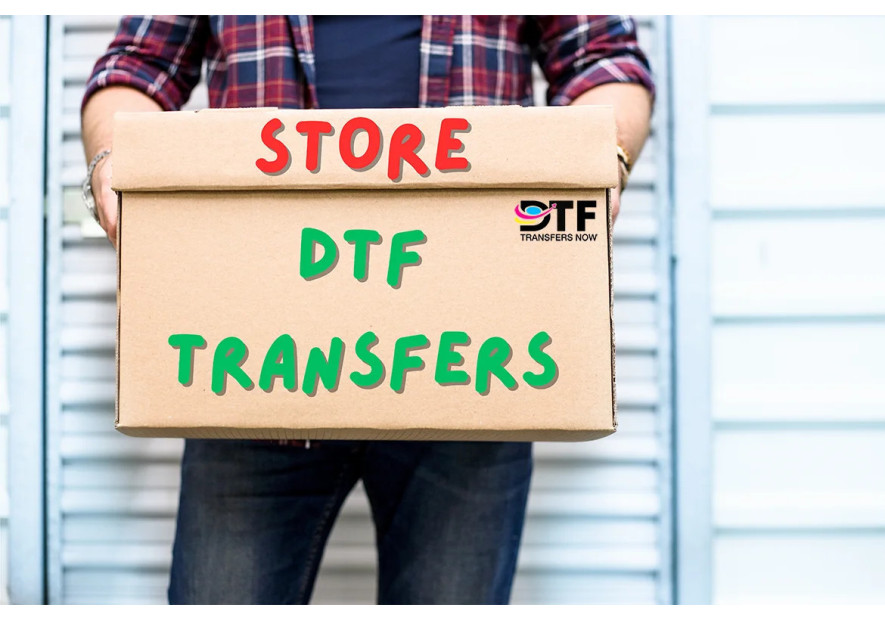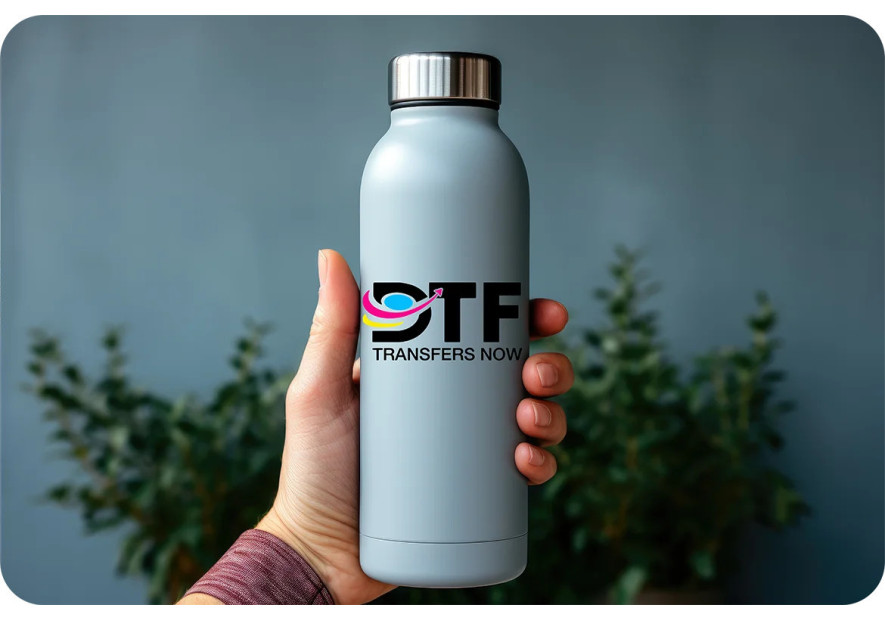How to Store DTF Transfers

What Are DTF Transfers Made Of?
DTF transfers, short for direct-to-film transfers, are made up of a combination of ink and adhesive. These transfers are created by printing the desired design onto a thin film using specialized printers. The ink used in DTF transfers is typically a pigment-based or sublimation ink that ensures vibrant colors and sharp details. To facilitate adherence, an adhesive layer is applied to the backside of the film.
This adhesive layer allows the transfer to be easily applied onto various surfaces such as fabric, plastic, or wood. The composition of DTF transfers ensures durability and high-quality results when properly stored and used.
Right Environment For Storing DTF Transfers
The right environment for storing DTF transfers is crucial to ensure their longevity and quality. Firstly, keeping them in a cool and dry place, away from direct sunlight or extreme temperatures, is essential. Exposure to heat or wetness can damage the transfers and impact their adhesive properties. Secondly, storing them in an airtight container will protect them from dust, dirt, and humidity.
Avoid folding or creasing the transfers, as it may cause permanent damage. Lastly, maintaining an appropriate temperature and humidity level in the storage area is recommended to preserve the color vibrancy and adhesive strength of DTF transfers over time.
Role Of Temperature And Humidity When Storing DTF Transfers
The role of temperature and humidity is very important when it comes to storing DTF transfers. Maintaining an optimal environment is essential to preserve the quality and longevity of these transfers. Extreme temperatures can negatively impact the adhesive properties and color vibrancy of the DTF transfers. Increased humidity levels can lead to moisture absorption, causing the transfer film to become sticky or damaged.
On the other hand, reduced humidity levels can cause the film to become brittle and prone to cracking. To ensure properly storage, it is recommended to store DTF transfers in a cool, dry place, away from direct sunlight or any moisture sources that could compromise their integrity.
Preparing DTF Transfers For Storage: Cleaning And Packaging
Before storing DTF (direct-to-film) transfers, cleaning and packaging them properly is essential to ensure their longevity and quality. Start by gently removing any dust or debris from the transfer surface using a soft, lint-free cloth or brush. Avoid using abrasive materials that may scratch the delicate surface. If necessary, use a mild cleaning solution specifically designed for film transfers to remove stubborn stains or fingerprints.
Once cleaned, ensure the transfer is completely dry before proceeding. Next, carefully package the DTF transfer in an acid-free archival sleeve or folder to protect it from moisture, dust, and light exposure.

Handling And Transporting DTF Transfers
When it comes to handling and transporting DTF transfers, it is essential to exercise caution and care. Firstly, ensure that the transfers are stored in a dry and clean area, away from any moisture or direct sunlight. To avoid any damage or creasing, it is advisable to stack the transfers flat on a surface or in a protective container. When transporting the transfers, use sturdy packaging materials such as cardboard boxes or padded envelopes to prevent any accidental tearing or bending.
Additionally, label the package clearly with appropriate handling instructions to ensure safe delivery.
Organizing And Labeling DTF Transfers For Easy Retrieval
When it comes to storing DTF transfers, organizing and labeling them correctly is crucial for easy retrieval. Start by categorizing the transfers based on different themes or subjects. Use folders or binders to keep similar transfers together, ensuring they are easily accessible when needed. To further enhance organization, consider labeling each folder or binder with clear and descriptive titles that reflect the content inside.
Additionally, use dividers or tabs within the folders to separate different types of transfers within each category. By adopting a systematic approach to organizing and labeling DTF transfers, you can save time and effort in finding specific files whenever required.
Tips For Long-Term Storage Of DTF Transfers
- Use acid-free, archival-quality storage materials: To ensure the longevity of your DTF transfers, storing them in acid-free sleeves or folders made from archival-quality materials is crucial. Acidic substances can deteriorate the transfers, leading to discoloration or damage.
- Avoid direct sunlight and extreme temperatures: Exposure to sunlight and extreme temperatures can cause fading, warping, or cracking of DTF transfers.
- Store them in a cool, dry place away from windows or any heat sources.
- Handle with clean hands: Always handle DTF transfers with clean hands to prevent oil or dirt from transferring onto the surface.

Avoiding Common Mistakes In Storing DTF Transfers
Proper storage of Direct to Film (DTF) transfers is crucial to ensure their longevity and quality. To avoid common mistakes, select a suitable storage area that is cool, dry, and free from direct sunlight. Excessive heat or humidity can lead to color fading or deterioration of the transfer material. Additionally, it is essential to handle DTF transfers with clean hands or gloves to prevent oils and dirt from transferring onto the film surface.
Another mistake to avoid is storing DTF transfers without proper protection. Always place them in acid-free sleeves or archival boxes designed for storing delicate materials. This helps shield them from dust, moisture, and potential physical damage.
To sum it all up, storing DTF transfers is a thorough task as they are delicate and need good environments; however, once you understand the tips and guidelines, it will become a regular task for your business, so, now that you see DTF transfers are good to store, it is time for you to start your own business with DTF Transfers, let us be your supplier, check all of our services and products, we will be more than happy to help you out!



Leave a comment